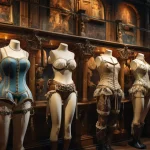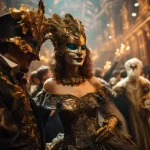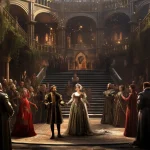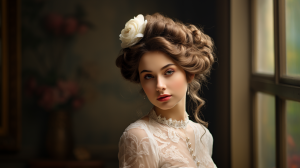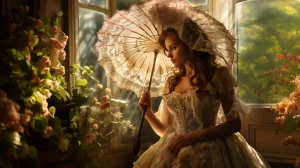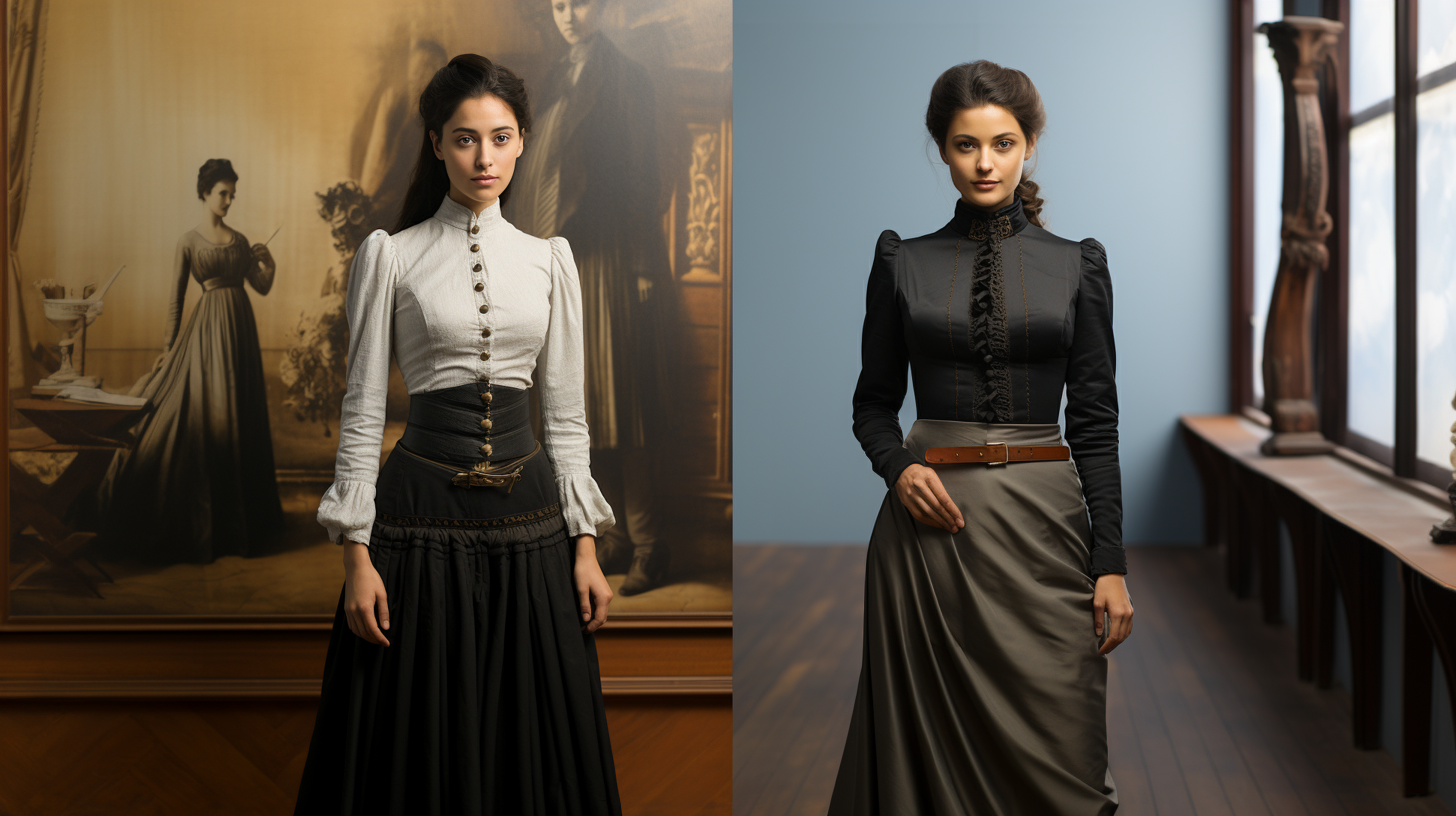
Step into the Time Machine of Photography
Ladies and gentlemen, as we embark on this captivating journey, let us take a step back in time to the opulent and fascinating world of the Victorian era. 🕰️ Picture yourself transported to the 19th century, where society was marked by elegance, decorum, and intricate fashion. Yet, we won’t be relying on a traditional time machine; instead, we will delve into the past through a different kind of portal—early photography.
Introduction
Welcome to “Victorian Era Photography: Portraits of Fashion and Society.” In this remarkable exploration, we will uncover the role of early photography in capturing the essence of the Victorian era, offering us a unique glimpse into a world defined by intricate fashion and societal norms. With the focus keyword, Victorian era photography, we’ll unveil how a revolutionary invention forever altered the way we perceive history.
Pioneering Victorian Photographers
As we delve deeper into the world of Victorian era photography, our journey takes us into the lives and work of the visionary photographers who shaped this revolutionary art form. 📸
Daguerre and the Masterpiece of Portraiture
Louis Daguerre, a name synonymous with early photography, was not only an inventor but also an accomplished painter. His artistic sensibilities transcended onto his daguerreotypes, where every portrait was akin to a meticulously crafted masterpiece. Imagine the awe of sitting for a daguerreotype portrait, knowing that you were participating in a groundbreaking art form.
Julia Margaret Cameron: Capturing the Soul
In contrast to the precision of Daguerre’s portraits, Julia Margaret Cameron, a trailblazing female photographer of the Victorian era, brought an ethereal quality to her work. Her lens revealed the inner essence of her subjects, making her portraits appear as if they could whisper secrets from the past. Cameron’s ability to capture the soul of her subjects through soft focus and dramatic lighting was nothing short of mesmerizing.
The Elegance of Nadar
Across the English Channel, in the heart of Paris, Gaspard-Félix Tournachon, better known as Nadar, made his mark. His striking portraits of Victorian society figures and celebrities were infused with an elegance that reflected the grandeur of the era. Imagine sitting for a portrait session in Nadar’s Parisian studio, where your presence was elevated to that of a star.
Memento Mori: The Poignancy of Post-Mortem Photography
While many Victorian photographs celebrated life, others documented the somber aspects of existence. Post-mortem photography, a practice that may seem macabre to us today, was a way for families to remember their departed loved ones. These poignant images serve as a haunting yet poignant reflection of Victorian mourning customs.
Image Placeholder: A hauntingly beautiful daguerreotype portrait by Louis Daguerre, capturing the intricate lace and fine details of Victorian attire, with a mesmerizing depth that transports you back in time.
The Birth of Photography in the Victorian Era
As we venture further into the captivating world of Victorian era photography, let’s turn our gaze towards the inception of this revolutionary art form. 📷
The Pioneering Visionaries
In the early 19th century, a wave of creativity and innovation swept across the world, leading to the birth of photography. It was during the heart of the Victorian era that this transformative invention came to life. Imagine a time when painted portraits were the norm, and the concept of capturing a fleeting moment with a click of a button was unheard of.
The Daguerreotype: A Breakthrough
Our journey begins with Louis Daguerre, a French artist and inventor. His groundbreaking work resulted in the invention of the daguerreotype, a photographic process that would forever change the way we documented history. A daguerreotype involved exposing a polished silver plate to light, creating a detailed and intricate image. The sheer magic of seeing a reflection of reality etched onto a silver surface left audiences awestruck.
The Calotype and Paper Negatives
Across the English Channel, William Henry Fox Talbot was working on a different photographic process known as the calotype. This technique used paper negatives to produce multiple positive prints. It was a leap forward in making photography more accessible and practical.
The Collodion Process: Precision and Detail
In the midst of these developments, Frederick Scott Archer introduced the wet collodion process. This method allowed for greater precision and detail in photographs. Picture a photographer carefully coating glass plates with collodion and immersing them in silver nitrate baths. The resulting images were astonishingly sharp, capturing intricate details of clothing and society.
The Advent of Portrait Studios
These pioneering photographers set up studios, much like an artist’s workshop. Elaborate backdrops, ornate props, and controlled lighting were all part of the experience. The studio became a stage where individuals, couples, and families could showcase their fashion and status.
Image Placeholder: An artist’s studio, bathed in soft light, with an elegantly dressed Victorian lady posing for her daguerreotype. The photographer, surrounded by his equipment, carefully prepares to capture her likeness.
I
Fashion Portraits: A Glimpse into Victorian Dress
Our journey through the annals of Victorian era photography continues, and in this section, we shift our focus to the exquisite world of Victorian fashion. 👗
The Victorian Wardrobe: Layers of Elegance
Picture yourself in a grand drawing room of the 19th century, where ladies in voluminous dresses and gentlemen in tailored suits create a symphony of elegance. Victorian fashion was characterized by its attention to detail and layers upon layers of clothing. A glimpse into this era was a visual feast of textures, fabrics, and intricate designs.
Women’s Fashion: Corsets, Crinolines, and Bustles
For Victorian women, the attire was a statement of social status and femininity. Bold and elegant, they adorned themselves with corsets that cinched their waists, crinolines that gave volume to their skirts, and bustles that added drama to their silhouettes. Imagine a daguerreotype capturing the intricate lace and silk of a Victorian lady’s gown, her posture a testament to the ideal of the era.
Men’s Fashion: Tailored Excellence
Gentlemen of the Victorian era exuded an air of refinement through their clothing. Tailored suits, waistcoats, and top hats were the staples of their wardrobes. In a portrait by Nadar or Cameron, you’d find every button and stitch of a well-tailored suit rendered with precision.
Accessories: The Devil in the Details
In the world of Victorian fashion, accessories were the finishing touches that elevated an ensemble to a work of art. Think of delicate lace collars, intricate cameos, and ornate jewelry, each piece meticulously chosen to complement the overall look.
Image Placeholder: A daguerreotype capturing a Victorian lady in a resplendent gown, her dress adorned with lace, ribbons, and intricate embroidery. The details of her attire, from the corseted waist to the cascading layers of her crinoline skirt, are impeccably rendered.
Society in Focus: Documenting Victorian Life
In our exploration of Victorian era photography, we’ve uncovered the elegance of fashion portraits. Now, let’s turn the lens towards the broader canvas of Victorian society, where photographs served as windows into daily life. 🏡👨👩👧👦
Family Portraits: A Glimpse into Domestic Life
Imagine a parlor adorned with ornate furniture and heavy draperies. A family, dressed in their finest attire, gathers for a portrait that would capture their unity and social status. These family photographs not only immortalized kinship but also offered a glimpse into the home environments of the Victorian era.
Work and Industry: The Fabric of Society
As society evolved, so did the role of photography in documenting the changing landscape. Photographers ventured into factories, coal mines, and bustling city streets to capture the world of labor and industry. These images depicted the sweat and toil of the working class, providing a stark contrast to the opulence seen in fashion portraits.
Leisure and Entertainment: A Break from the Norm
Even in the midst of structured society, Victorians knew how to enjoy life’s pleasures. Imagine a photograph capturing the excitement of a fair, the elegance of a theater audience, or the leisurely pursuits of a garden party. These images offered a respite from the formalities of daily life.
Transportation and Innovation: Wheels of Progress
The Victorian era was marked by remarkable innovations, and photography was there to document them. From the introduction of steam locomotives to the construction of grand bridges, photographers captured the spirit of progress and transformation.
Image Placeholder: A Victorian family portrait taken in their opulent parlor, with intricate patterns on the wallpaper and heavy draperies framing the scene. The family members, dressed in their finest attire, convey a sense of unity and social standing.
Photography Studios: Capturing the Essence
In our Victorian photographic journey, we have seen how the camera lens revealed fashion and society. Now, let’s take a step behind the scenes and explore the studios where these captivating images came to life. 📷✨
The Victorian Studio: A Theatrical Setting
Victorian photography studios were more than mere workplaces; they were theatrical stages set for creating art. Imagine entering one of these studios, where dramatic backdrops, elegant props, and expertly positioned lighting transformed a mundane setting into a world of fantasy. Every detail was carefully orchestrated to capture the essence of the era.
The Role of the Photographer: Part Artist, Part Director
Photographers of the Victorian era were not just technicians; they were artists and directors. They used their creative vision to guide subjects into poses that conveyed their personalities and the societal norms of the time. It was a collaborative effort between the photographer and the subject, resulting in a carefully crafted tableau.
Lighting Techniques: Shaping Shadows and Highlights
Before the era of sophisticated lighting equipment, Victorian photographers mastered the art of natural light. Imagine the skill it took to harness the play of sunlight streaming through large windows or strategically placed skylights. These techniques added depth and drama to portraits, highlighting the fine details of fashion.
Theatrical Props: Setting the Scene
Victorian studio photographers had an array of props at their disposal, each with its own symbolism. A velvet chaise lounge could convey sensuality, while a book or an instrument might suggest refinement and intellect. These props, when skillfully integrated into portraits, added layers of meaning to the images.
Image Placeholder: A Victorian photography studio bathed in soft natural light, with a richly decorated backdrop featuring lush curtains and ornate furniture. A photographer, dressed in period attire, directs a subject into a pose that captures the essence of the era.
The Language of Victorian Photography
As we continue our exploration of Victorian photography, we enter the realm of symbolism and visual language, where photographs spoke volumes through subtle cues and hidden meanings. 📷🗝️
Poses and Gestures: Messages Beyond Words
In the Victorian era, every pose and gesture in a photograph held significance. A portrait subject’s stance, hand placement, and expression conveyed messages of love, respect, or even sorrow. Imagine deciphering the unspoken language captured within these images, where a turned head or a folded fan could tell a story of its own.
Hidden Objects: Unveiling Sentiments
Victorian photography often featured objects with concealed meanings. A single flower held by a subject could convey a message of affection or remembrance. Locked diaries or miniature portraits of loved ones could be subtly included in photographs, adding layers of emotional depth.
Backgrounds and Settings: The Narrative Stage
The carefully chosen backdrop of a Victorian photograph was not merely decorative; it was a narrative stage. A rural landscape hinted at an idyllic life, while an urban setting spoke of modernity and progress. Imagine standing before a painted canvas, transported into a world carefully curated by the photographer.
Fashion as Language: Dressing for Expression
In the Victorian era, clothing was a powerful form of self-expression. Every accessory, fabric, and color held meaning. For example, mourning attire with somber hues and jet jewelry conveyed grief, while vibrant colors and opulent fabrics signaled celebration. Visualize the wealth of information encoded within the folds of a Victorian gown or the choice of a gentleman’s cravat.
Image Placeholder: A Victorian photograph featuring a couple in an embrace, their expressions and body language conveying deep affection. The woman holds a single rose, while the man’s pocket watch subtly alludes to the passage of time.
Capturing Timelessness: The Enduring Appeal of Victorian Photography
In our journey through the lens of Victorian photography, we’ve unveiled the secrets of symbolism and visual language. Now, let’s explore the timeless allure of these vintage images and why they continue to captivate us today. 📷⏳
A Window to the Past: Nostalgia and Sentiment
Victorian photographs provide a precious glimpse into a bygone era, allowing us to step into the shoes of those who lived before us. Imagine the sense of nostalgia and connection when we look at these portraits, where people long gone seem to come alive before our eyes.
Artistry and Craftsmanship: Precious Relics
Every Victorian photograph is a work of art, a testament to the craftsmanship of both the photographer and the subjects. Picture the meticulous attention to detail in the poses, the careful choice of props, and the sumptuous fabrics of clothing that have stood the test of time.
Fashion Inspiration: Reviving Victorian Trends
Victorian fashion has left an indelible mark on the world of style. As we gaze upon these vintage photographs, we find inspiration in the intricate lace, the opulent jewelry, and the elegant silhouettes of the past. Today’s fashion designers often draw from these historical treasures to create modern interpretations.
A Reflection of Society: Learning from History
Victorian photographs also serve as mirrors reflecting the society of their time. The images capture the values, customs, and aspirations of an era. They remind us of how society has evolved and the enduring power of visual storytelling.
Image Placeholder: A close-up of a Victorian photograph, showing the exquisite details of a lady’s lace collar and the delicate patterns of her gown. The image exudes a sense of timeless beauty and craftsmanship.
Unveiling the Past, Capturing the Present
As our journey through the Victorian era comes to an end, it’s time to reflect on the profound impact of early photography on our understanding of fashion and society. 📷🌟
A Treasure Trove of Memories: Preserving History
Victorian photography, with its meticulous attention to detail, has gifted us with a trove of visual memories. Each image is a time capsule, preserving the essence of an era long past. These photographs allow us to witness the evolving fashions, cultural shifts, and the lives of those who lived during the reign of Queen Victoria.
The Enduring Power of Visual Storytelling
The enduring appeal of Victorian photography lies in its ability to transcend time. Whether capturing the grace of a bygone era or inspiring modern fashion, these images continue to captivate us. They remind us that photography is not just about pixels and lenses but a profound form of storytelling, allowing us to bridge the gap between centuries.
A Fashion Journey Continues: From Victorian Elegance to Contemporary Chic
As we bid farewell to the Victorian era, let’s carry forward the lessons learned from its fashion history. The influence of this period can be seen in today’s clothing and accessories, as designers draw inspiration from the past. It’s a testament to the enduring relevance of Victorian style.
Image Placeholder: An image of a modern fashion runway, where a model showcases a contemporary outfit inspired by Victorian elements. The juxtaposition of old and new signifies the timeless nature of fashion.



